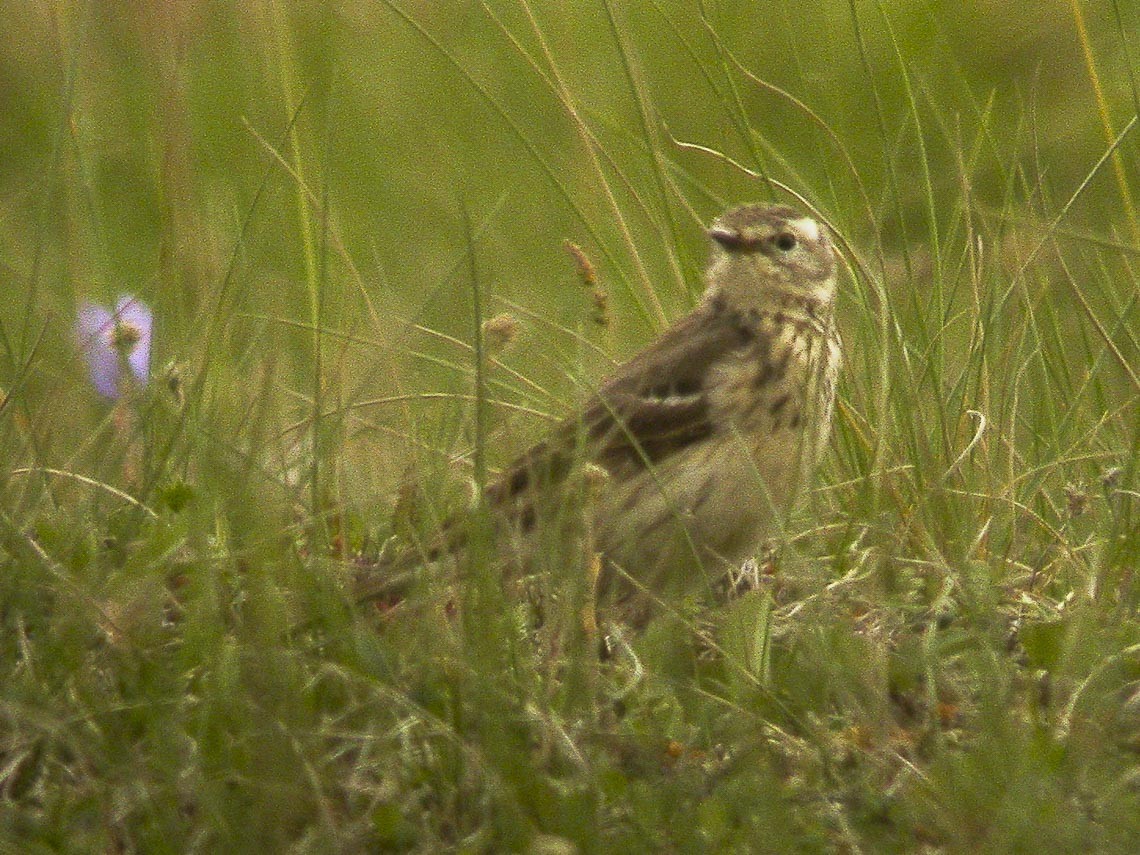American Pipit
A species of Pipits, Also known as American Water Pipit, Pacific Pipit Scientific name : Anthus rubescens Genus : Pipits
American Pipit, A species of Pipits
Also known as:
American Water Pipit, Pacific Pipit
Botanical name: Anthus rubescens
Genus: Pipits
Content
Description General Info
 Photo By Francesco Veronesi , used under CC-BY-SA-2.0 /Cropped and compressed from original
Photo By Francesco Veronesi , used under CC-BY-SA-2.0 /Cropped and compressed from original Description
Like most other pipits, the buff-bellied pipit is an undistinguished-looking species which usually can be seen to run around on the ground. The rubescens subspecies (or American pipit) has lightly streaked grey-brown upperparts and is diffusely streaked below on the buff breast and flanks. The belly is whitish, the bill and legs are dark. The japonicus subspecies (or Japanese pipit) is darker above and has bolder black streaking on its whiter underparts; its legs have a reddish hue. The call is a squeaky sip. Measurements: Length: 16 cm Weight: 22 g Wingspan: 24 cm 
Size
17 cm (6.5 in)
Colors
Black
Yellow
Bronze
Gray
White
Life Expectancy
5.1 years
Nest Placement
Ground
Clutch Size
3 - 7 eggs
Feeding Habits
American Pipit primarily consume insects such as mayflies, caddisflies, and beetles, and occasionally small crustaceans and marine worms. In fall and winter, they supplement their diet with seeds and plant matter. They forage solo or in large post-breeding flocks, walking swiftly and changing directions to inspect the terrain, and sometimes catching prey mid-air.
Habitat
American Pipit are versatile in their habitat preference, often found in tundra and alpine slopes during breeding seasons. They favor grassy meadows and shrublands in the far North, including drier areas than those chosen by nesting Horned Larks. At high elevations, they inhabit alpine and subalpine meadows, as well as boulder fields and scree slopes. During migration, these birds prefer open spaces like agricultural fields, turf farms, sports fields, as well as beaches and shores. In winter, open, snow-free areas are key, with american Pipit sometimes seen wading in search of food.
Nest Behavior
Females construct the nest with male-provided materials. The pair's nesting period includes creating the fortified cup nest and caring for the eggs and young in these secure ground locations.
Nest Characteristics
American Pipit's nest is ground-based in open environments like meadows, with partial shelter. The nest, primarily of dried grasses and some feathers or hair, measures approximately 2.8 inches across and 1.5 inches deep.
Dite type
Insectivorous
General Info
Feeding Habits
Bird food type
Sounds
Call
Recording location: United States
Behavior
American Pipit showcase a fascinating blend of behaviors, particularly during the breeding season. Unmated males make an early appearance on nesting grounds and partake in aerial display songs to attract mates and defend territories. These elaborate displays involve a high ascent followed by a spiraling descent with conspicuous tail and wing positioning. Territoriality is pronounced, with males engaging in conflict and displays of aggression. Mated pairs sometimes arrive together, and females can also chase away intruders. American Pipit's territory size varies, subject to food availability, with observed ranges between a third of an acre to five acres. During incubation, males contribute by bringing food to females away from the nest. Adverse weather conditions, like spring snowstorms, can interrupt nesting, pushing american Pipit to relocate temporarily. Foraging behavior is characterized by quick, bobbing movements as they search for food, often shifting directions abruptly. Outside the nesting season, american Pipit may gather in large flocks for feeding, exhibiting agile ground pecking, and low-vegetation gleaning, interspersed with short flights in pursuit of prey.
Species Status
Not globally threatened.
Scientific Classification
Phylum
Chordates Class
Birds Order
Perching birds Family
Wagtails Genus
Pipits Species
American Pipit